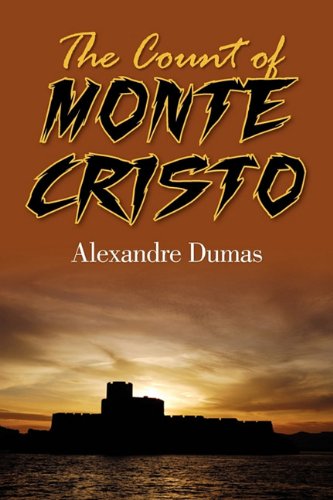All Nonfiction
- Bullying
- Books
- Academic
- Author Interviews
- Celebrity interviews
- College Articles
- College Essays
- Educator of the Year
- Heroes
- Interviews
- Memoir
- Personal Experience
- Sports
- Travel & Culture
All Opinions
- Bullying
- Current Events / Politics
- Discrimination
- Drugs / Alcohol / Smoking
- Entertainment / Celebrities
- Environment
- Love / Relationships
- Movies / Music / TV
- Pop Culture / Trends
- School / College
- Social Issues / Civics
- Spirituality / Religion
- Sports / Hobbies
All Hot Topics
- Bullying
- Community Service
- Environment
- Health
- Letters to the Editor
- Pride & Prejudice
- What Matters
- Back
Summer Guide
- Program Links
- Program Reviews
- Back
College Guide
- College Links
- College Reviews
- College Essays
- College Articles
- Back
The Count of Monte Cristo by Alexandre Dumas
The Count of Monte Cristo is a classic novel that intertwines some of the most controversial themes in the history of literature. The main one is that of divine retribution; that is, Dantes, the main character, seeks revenge against those who were responsible for sending him to prison. However, he realizes that this is wrong, and seeks forgiveness from God. There are also several sub-motifs and symbols throughout the novel. For example, several characters assume aliases throughout the play-this fact and the names that they assume reflect changes in the characters as they grow and learn, or as their circumstances change, such as going from good to bad, poor to rich, etc. Last, the sea could also be considered a symbol; again, it is the symbol of change. When Dantes escapes from prison, his dunking in the sea represents the change from innocent and wronged Dantes to hateful and vengeful Count of Monte Cristo. Another topic is that of suicide. Several characters several times throughout the novel, consider suicide. For example, Monsieur Morrel, when his business is failing, is in the position where he cannot, for the first time in his life, pay off a debt. Morrel views suicide as the more honorable alternative to not being able to pay his creditors. There are also several characters who play a major impact on Dantes’/the Count’s life. First of all, there is his father. His father sacrifices so much on Dantes’ behalf, and loves his son very much. Also, Monsieur Morrel, Dantes’ employer before he is arrested, sticks by Dantes, even after he is arrested, at great risk to his reputation. Then, there is Abbe Faria, Dantes’ prison mate. Faria is like a second father to Dantes, and teaches him several things while in prison, then told him the long-unsolved secret of the treasure of Monte Cristo. Then, there are the people who are responsible for Dantes’ false arrest: Monsieur/Baron Danglars is jealous of Dantes, who is nineteen and is about to become the Captain of the commercial ship that they both are crew on. He combines with Fernand Mondego/Count Morcerf, who is jealous of Dantes because of the girl that Dantes is about to marry, whom Fernand loves. They frame Dantes of being a Bonapartist, which was a serious crime. Lastly, there is de Villefort. de Villefort is the public prosecutor who declares Dantes guilty to protect his name and further his career. Finally, I would like to talk about prison. Prison is viewed as a punishment for crimes and criminals, which is true. However, it does no good to punish prisoners if you do not try to help them grow. The prison system today helps prisoners know what they did wrong and take counseling to help them improve. Simply punishing prisoners only creates hatred and does nothing to help they prisoner. Dantes, when he was put in prison, only ever saw one person for several years, and that was the jailer who brought him his food every day. Besides that, he was left on his own, and probably spent that time building his thoughts up to hatred. If they would have tried to help him improve, then he most likely would not have turned out the way he did, in my opinion.
Similar Articles
JOIN THE DISCUSSION
This article has 0 comments.

